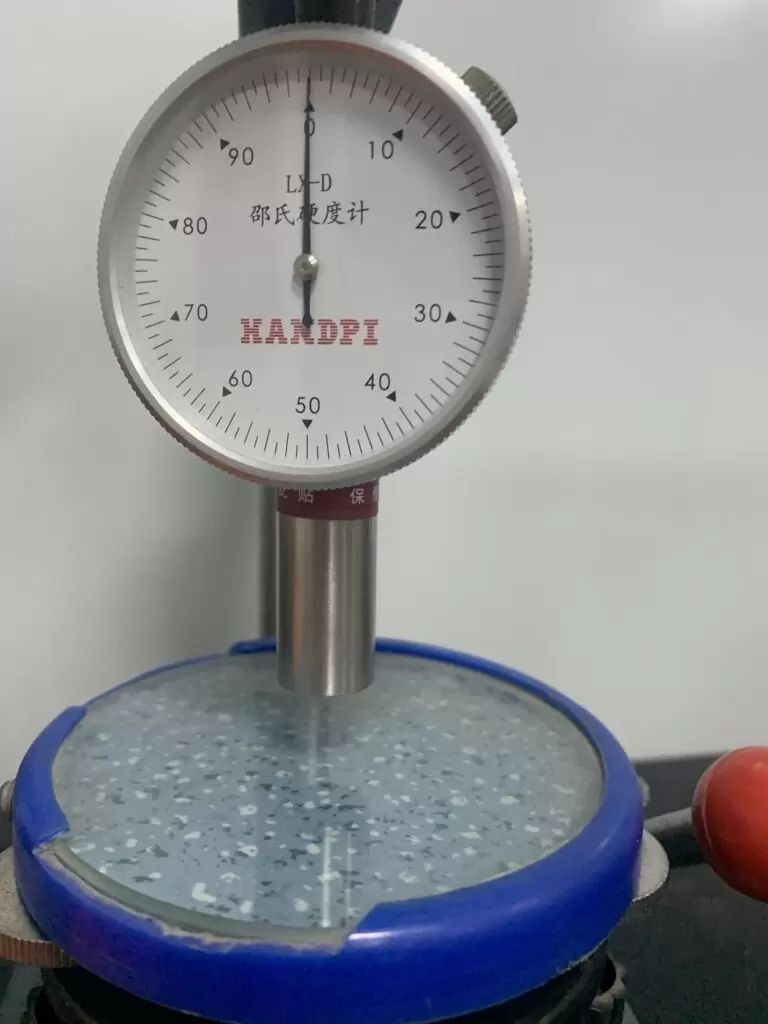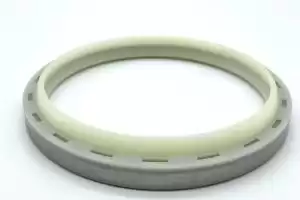Hardness is an important physical indicator for measuring the ability of materials to resist deformation under external pressure or prevent penetration and is widely used in industrial manufacturing. Among the many hardness measurement systems, Shore A hardness has attracted much attention due to its simplicity and wide application.
This article will give you a comprehensive understanding of the relevant information on Shore A’s hardness.
What is a Shore durometer?
The Shore hardness tester is a test device used to measure the hardness of materials.It is a tool for measuring the depth of indentation or the size of the trace after a drill or ball head of different shapes and sizes is pressed on the surface of the sample to determine the hardness of the material.
Three types of the Shore durometer—A, B, and C—are available to measure materials with varying degrees of hardness.
What is Shore A hardness?
Shore A hardness is a grade that indicates the degree of hardness. A Shore durometer mainly measures it. The size of its value reflects the hardness of the material.
The range of Shore A hardness is from 0 to 95A. For example, the hardness of the commonly used elastomer nitrile rubber is 70-90A. If it exceeds 95A, it cannot be measured by Shore A hardness and needs to be replaced with a Shore D durometer.On the other hand, metal and engineering plastic hardness are measured using Rockwell hardness.
Shore A (elastomer hardness measurement unit) and Shore D (high hardness elastomer hardness measurement unit) are generally used in hydraulic seals.
Shore A, C, D hardness comparison table
| Shore Hardness A | Shore Hardness C | Shore Hardness D | Polymer Type |
| 10 | 8 | 4 | Rubber |
| 20 | 11 | 6.5 | |
| 30 | 15 | 8 | |
| 40 | 18 | 10 | |
| 50 | 21 | 12 | |
| 60 | 27 | 15 | |
| 70 | 36 | 20 | |
| 75 | 43 | 25 | |
| 80 | 50 | 30 | |
| 85 | 57 | 35 | |
| 86 | 65 | 38 | |
| 90 | 70 | 42 | Soft Plastic |
| 94 | 80 | 50 | |
| 96 | 89 | 55 | |
| 98 | 93 | 60 | |
| 95 | 65 | Medium Hardness Rubber | |
| 70 | |||
| 74 | |||
| 77 | |||
| 8. | |||
| 83 | |||
| 86 | Hard Plastic | ||
| 90 |
Shore A hardness measurement method
Step 1: Place the test material in the middle of the durometer measurement platform;
Step 2: Let the durometer’s indenter press on the surface of the sample and ensure that there is no interference from external forces; measure the depth of the indenter into the sample; the deeper the indenter is, the smaller the hardness;
Step 3: Read the value on the instrument panel of the durometer and record it in the report; the pointer of the durometer directly shows the hardness of the rubber.
Note: When using Shore A hardness, which is generally lower than 90, when the hardness value of the measured material exceeds 95% of the range, D type should be used instead. When the D-type hardness value exceeds 95% of the range, it is measured by the Brinell or Rockwell hardness method. Otherwise, the accuracy is not high. HSA is often used to test soft plastic rubber, HSD is often used to test hard plastic rubber, and HSC is not often used.

The unit of Shore A hardness
Shore hardness measurement is in degrees. The values below 90 degrees are tested with the Shore A durometer, and the data is obtained. The values above 90 degrees are tested with the Shore D durometer, and the data is obtained. Therefore, generally speaking, for a rubber or plastic product, when testing, the tester can make a pre-test judgment based on experience, and thus decide whether to use the Shore A durometer or the Shore D durometer for testing.
For products with relatively large elasticity or softness, the tester can directly judge whether to use the Shore A durometer for testing, such as stationery glue bottles, TPU plastic film bags and other products. For products with basically no elasticity or hardness, the Shore D durometer can be used for testing, such as PC ABS PP and other products. If the degree is Shore Axx, it means that the hardness is relatively low, and if it is Shore Dxx, it means that the hardness is relatively high.
Advantages and disadvantages of the Shore A hardness of seals
As elastomer seals, the higher the hardness, the better the high-pressure resistance, the weaker the elasticity and the poorer the sealing performance;
On the contrary, the lower the hardness, the better the low-pressure resistance, the better the leakage resistance and the stronger the sealing ability.
At the same time, the groove finish is also considered. If the finish is low, the product with lower hardness needs to be selected to obtain better sealing performance. The higher the finish, the better the leakage resistance and the better the sealing performance.
Under the condition of using the same material, how to choose the hardness plays an important role in improving the pressure resistance and sealing performance of the seals. You should accurately understand and select the correct material hardness. If you are not sure how to choose the hardness of the seal, you can contact the TYS technical team to help you analyze and provide you with customized sealing solutions.







